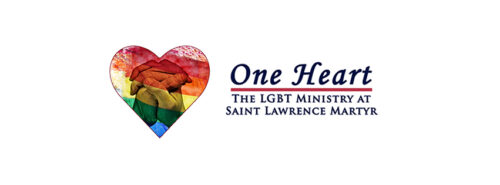There is an unmistakable look of empathy mixed with terror when Jean, a physical education teacher at a secular secondary school in Thatcher-era England, spots one of her 15-year-old students in a gay bar. The underage student is not supposed to be there, but then again, neither is Jean.
The bar is one of the few places where Jean (Rosy McEwen) and her girlfriend Viv (Kerrie Hayes) can gather with their gay friends without the threat of retribution, the threat of violence, the threat of a conservative society emboldened by its political leaders to view LGBTQ people with suspicion and disgust. “What happens to my job if my student sees me here?” she thinks. “What will happen to her?”
The ever-present risk of expulsion and the lingering fear of state-sanctioned prejudice looms large over a lesbian teacher’s life in “Blue Jean,” the sensitive and often surprising debut film from British newcomer Georgia Oakley. Jean moves with maximum discretion and caution through a world of contrasts. She is an unimpeachable professional, utterly bereft of sexual desire in her workplace and an engaged member of her queer community at night.
The ever-present risk of expulsion and the lingering fear of state-sanctioned prejudice looms large over a lesbian teacher’s life in “Blue Jean,” the new film from Georgia Oakley.
But the painstakingly managed distinctions between her public and personal life start to converge once her closeted student Lois (Lucy Halliday) repeatedly visits the lesbian bar and jeopardizes Jean’s livelihood.
Lois, a shy and awkward girl subjected to juvenile taunts and crass innuendos by her classmates, frequents the bar as a place of refuge from adolescent homophobia. In fact, the only time in the film where Lois appears happy and comfortable is when she is shooting pool with Jean’s queer friends. Afraid of her sexuality being revealed to the faculty, Jean threatens to remove Lois from the school’s netball team unless she stops coming to the bar.
And once a student falsely claims that Lois sexually assaulted her in the locker room after a practice, Jean says Lois has become “overly attached” to her—and stays quiet while Lois is expelled.
Racked with guilt over her betrayal of Lois, Jean visits her house and makes an attempt to explain herself. But the damage is done: One queer person has now been victimized by another too afraid to sacrifice her job for the truth. It’s a provocative storyline, and one that must be understood in the context of late 1980s Britain.
The historical milieu that surrounds and suffocates Jean is both distant and immediate, especially for LGBTQ teachers at Catholic schools. Amid the scourge of H.I.V./AIDS in England, which predominantly affected men who had sex with men, the British Prime Minister Margaret Thatcher outraged LGBTQ activists in 1987 when she suggested that homosexuality was a threat to children.
The historical milieu that surrounds and suffocates Jean is both distant and immediate, especially for LGBTQ teachers at Catholic schools.
“Children who need to be taught to respect traditional moral values are being taught that they have an inalienable right to be gay,” claimed Thatcher at a Conservative Party event. “All of those children are being cheated [out] of a sound start in life.”
In May 1988, the U.K. government enacted a law, known as Section 28, that aimed to curb the “promotion” of homosexuality in schools and referred to the acceptance of a gay lifestyle as a “pretended family relationship.” Akin to the “Save Our Children” campaign in the 1970s, when Christian singer and orange juice spokeswoman Anita Bryant targeted LGBTQ people as child predators and launched a Florida-based movement that helped legalize discrimination against the community, the passage of Section 28 resulted in large-scale protests and civil unrest. A group of lesbian activists, wearing shirts that read “Stop the Clause,” disrupted a BBC News telecast in opposition to the law.
But much of the public did not have their backs. In 1987, a British Social Attitudes survey found that 64 percent of people in the country considered sexual relations between same-sex adults to be “always wrong.” (That same number had plummeted to 22 percent by 2012, marking a “clear liberal shift.”) In 2009, then-Prime Minister David Cameron made a public apology for the anti-gay law.
Yet the targeting of LGBTQ teachers is still a reality in some U.S. Catholic schools. In 2018, Shelly Fitzgerald, who spent 14 years as a guidance counselor at a Catholic high school in Indianapolis, was fired after administrators discovered her marriage to a woman. Lynn Starkey, the high school’s guidance co-director, and Joshua Payne-Elliott, a teacher at a separate Catholic high school in the city, were later fired for their same-sex marriages. The following year, Fitzgerald filed a federal discrimination suit—a case still in the courts—against her former employer and the archdiocese.
A Catholic high school in North Carolina fired a gay substitute teacher, who later won a civil rights lawsuit, in 2014. And a Catholic K-8 school in Denver also fired a gay teacher because of her sexual identity in February.
In 1987, a British Social Attitudes survey found that nearly two-thirds of the country considered sexual relations between same-sex adults to be “always wrong.”
But in 2019, when a Jesuit-run preparatory school was ordered by the Archdiocese of Indianapolis to remove a gay teacher in a same-sex marriage, the school refused—and the dispute eventually ended up at the Vatican. Sanctions imposed on the school by the local ordinary, Archbishop Charles Thompson, were lifted three months later by a Vatican decree.
These stories are just a handful of cases where Catholic schools have terminated LGBTQ employees. Due to religious freedom protections, which are often used against LGBTQ people, U.S. dioceses can skirt anti-discrimination laws passed by state legislatures. Jacquelyn Oesterblad, a civil rights attorney in Arizona, explained last month why religious institutions are exempt from these laws.
“We allow religious organizations to break anti-discrimination rules that we consider very important because the alternative is to allow the government to break the … constitutionally required rule that it not control religion,” she wrote in the National Catholic Reporter.
Due to religious freedom protections, which are often used against LGBTQ people, U.S. dioceses can skirt anti-discrimination laws passed by state legislatures.
In an ironic twist, the Archdiocese of Denver sued Colorado for being excluded from the state’s universal preschool program because of the church’s exclusion of LGBTQ students and adults. In a newly-released policy on gender identity in Catholic schools, the Diocese of Worcester, Mass, says that state laws do not apply to its policy restricting LGBTQ expression. Reads the Worcester policy:
“[Nothing] should be interpreted as submitting the bishop, the school or any other diocesan or diocesan-related entity to any state or federal law or regulation […] inconsistent with the doctrine and teachings of the Roman Catholic Church.”
By the end of the film, Jean’s big secret is out. When questioned by a stranger at a house party about her “boyfriend,” she publicly reveals her sexuality in a sudden act of liberation. Perhaps the price of hiding herself for the sake of her profession became too much to bear. Perhaps it wasn’t worth it. But her intolerant society will likely punish her, and for LGBTQ people in Catholic schools, the constant looking over the shoulder continues, even decades later.



